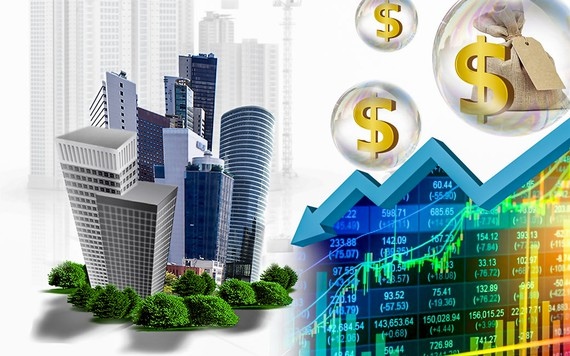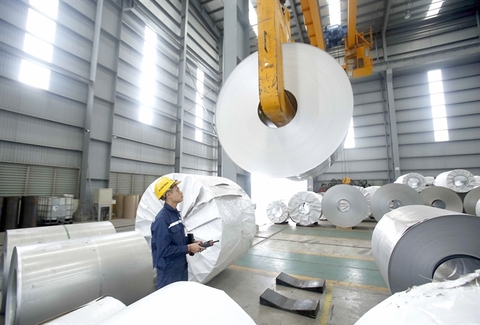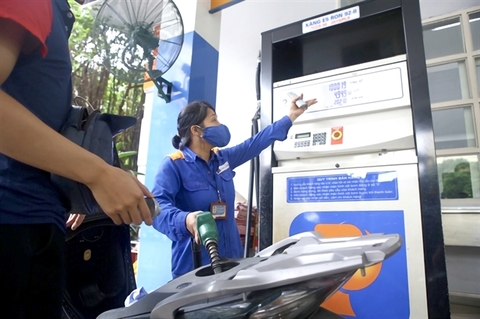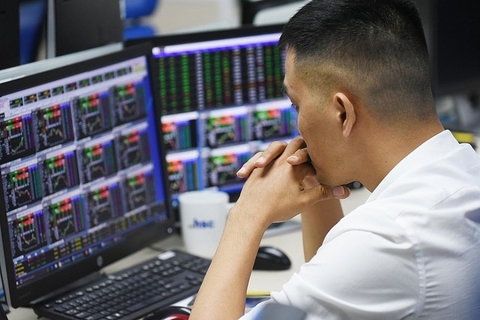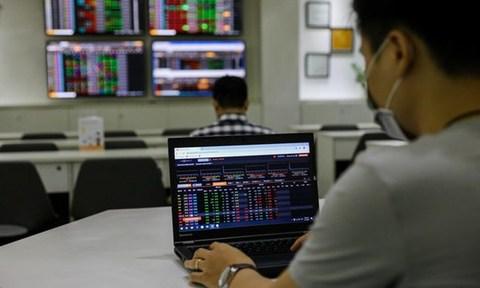Concerns for irregular credit flow into securities
Concerns for irregular credit flow into securities
Regulators feel that credit flowing into risk areas is under control, although in reality, there are concerns that irregular credit flow is still going into real estate and securities.
Ilustrative photo. |
Low credit efficiency
In mid-2021, the State Bank of Vietnam said that real estate credit growth in the first four months of the year was at 4.83%, and by the end of June it was about 5.5%, lower than the overall growth rate of the whole industry. According to the State Bank, in the past three years, credit growth in real estate slowed down based on growth data of about 26.76% in 2018, 21% in 2019, and 11.89% in 2020. The reason for the slow increase was mainly due to the impact of the Covid-19 pandemic, which caused investment activities to drop sharply.
However, data announced by the State Bank on real estate credit growth at the end of July was surprising, as it showed an increase of 9.88% compared to the end of 2020, accounting for 20.11% rise. While in the same period of 2020 it had increased by 5.47%, accounting for 19.87% rise. This is higher than the growth rate of the same period as well as the overall credit growth of the whole industry at 6.92% at the end of July. Within just one month, real estate credit had increased by 4.38%.
On the other hand, credit for investment and securities trading by the end of July only increased by 1.3%, although in the same period in 2020, credit in this field decreased by 15.83%. Credit for living needs increased by 6.37%, while in the same period in 2020 it only increased by 2.25%.
The significant increase in credit for living needs is under question, as statistics from the reports of financial companies serving consumer credit published by the Banking Association shows that the consumer credit balance of this group is not positive. Specifically, the total credit balance in nine months reached about VND 150,000 bn, with almost no growth compared to the end of 2020.
According to financial institutions, in the nine months of 2021, especially from the second quarter to the third quarter, when the fourth wave of the Covid-19 pandemic broke out, about 20 provinces and cities had to implement social distancing, affecting the demand for loans, and affecting disbursement revenue. Thus, the pandemic has had a strong impact on the demand for loans for consumption. In such a context, it is to be seen if the high growth from consumption can be announced.
Another problem is looking at the credit growth rate compared to the economic growth rate or GDP. According to the General Statistics Office, as of 20 September, the credit growth of the economy reached 7.17%, 1.4 times higher than the growth rate of the same period last year of 4.99%. However, the GDP in nine months only increased by 1.42% over the same period last year, due to the Covid-19 pandemic seriously affecting all sectors of the economy. With this figure, the credit growth rate is five times higher than the GDP growth rate.
Normally, a credit-to-GDP growth rate of 2.5 times will support the economy. In 2020, when the growth rate of credit compared to GDP was 4.1 times, experts warned that credit may be pushed into risk assets and not support the economy well. In the last nine months, the gap between credit growth and GDP continued to widen more than five times, raising concerns about money inflow into assets market and the increasingly low credit efficiency in the economy.
Suitable control mechanism
The State Bank of Vietnam still considers credit for risk areas under control, but also recognizes potential problems. In September, in the document requesting commercial banks and foreign bank branches about some issues in operations, the State Bank again noted the strict control of the growth rate of outstanding loans, credit quality for areas with potential risks, or the heavy impact of the Covid-19 pandemic, especially in real estate credit for self-use purposes.
The State Bank of Vietnam requires banks to regularly assess their operations, finances, and ability to repay loans, especially for customers with large credit balances in the real estate sector, individual customers with large loan balances for daily needs, and customers affected by the Covid-19 pandemic.
In this context, many experts fear that credit is implicitly flowing into real estate and securities. This is reflected in the low number of businesses accessing capital, but credit is still growing well, as many banks still want to be extend credit limit. During the recent pandemic, banks still had to bear the cost of space, staff, and deposit interest rates on long-term loans that could not be reduced despite the decrease in interest rates, but they still recorded high profits.
Meanwhile, many businesses left the market due to the impact of the pandemic, but the stock market increased sharply. According to data from the Vietnam Securities Depository (VSD), the number of new domestic individual investor accounts opened in the first nine months of 2021 reached 1 million, 2.4 times higher than the whole of 2020. Cash flow into securities continuously set a record. Similarly, real estate prices decreased but not too much.
According to experts, in principle, the State Bank of Vietnam still tightly controls the cash flow into real estate and securities, but there are still many ways for capital to go into these areas. Mr. Tran Thanh Hai, an economist, shared that a large part of commercial banks under pressure to increase credit and increase sales at branches and transaction offices still dodge loan procedures. They make plans in line with the policy of the State Bank for disbursement, not related to loans for investment in real estate and securities. However, this money is used by the borrower to invest in real estate or securities.
The State Bank of Vietnam has no current mechanism to sanction this, but Mr. Hai proposed that the State Bank have regulations to limit the mortgage of new real estate in loans. For example, when a customer borrows money for production and business purposes, only the collateral is in the red book or the house owned by the owner for five years or more. In the case of newly purchased real estate mortgage, although the purpose is still production and business, it must be strictly controlled. This is because these types of potential traps are invisible when the loan is very likely to flow into real estate or securities.


